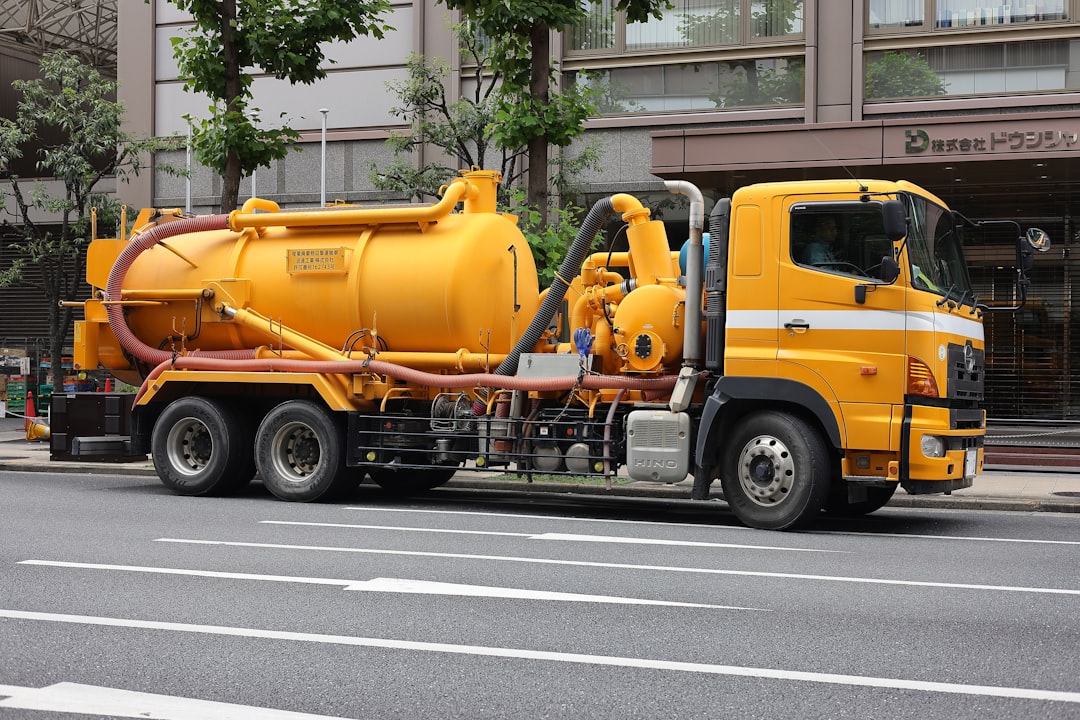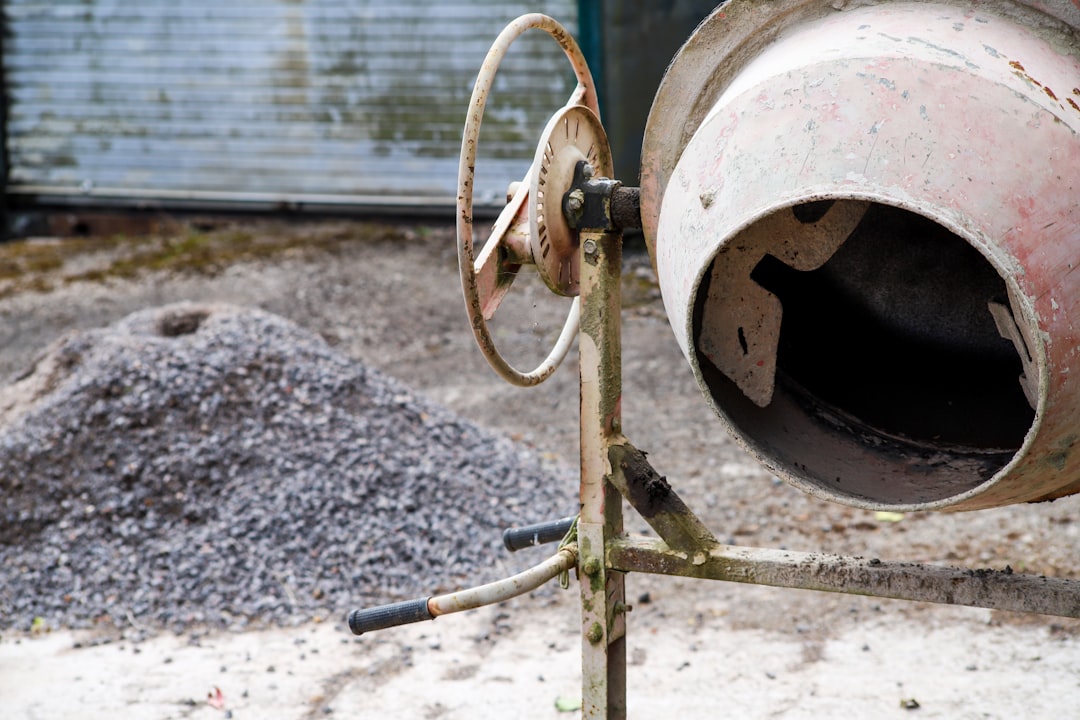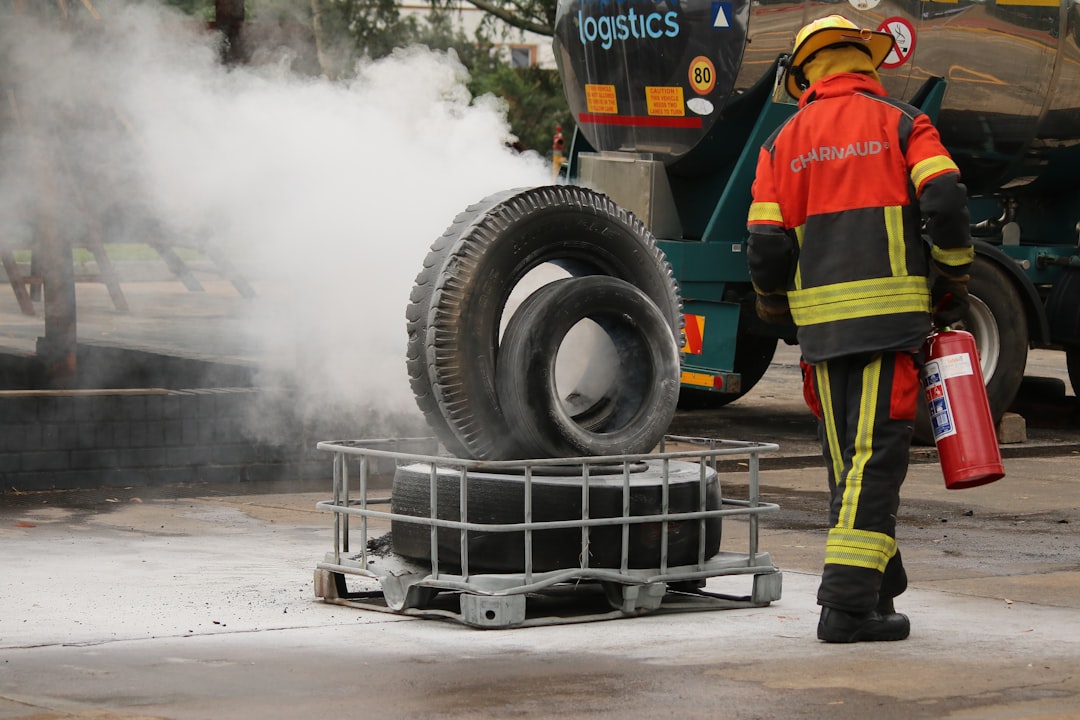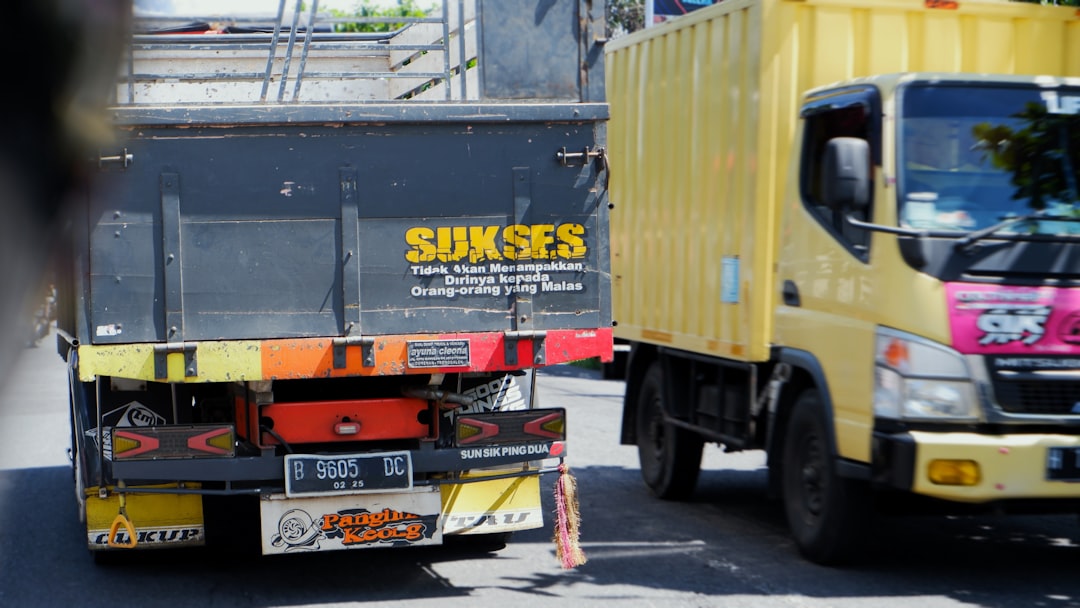

Engage prospects with a scan and streamline customer engagement with FREE QR code marketing tools by Sona – no strings attached!
Create a Free QR CodeFree consultation

No commitment

Engage prospects with a scan and streamline customer engagement with FREE QR code marketing tools by Sona – no strings attached!
Create a Free QR CodeFree consultation

No commitment
In today’s digitally driven environment, QR codes have rapidly shifted from a tech curiosity to a practical powerhouse for enabling instant offline-to-online actions. For sewer cleaning equipment suppliers, these scannable codes offer a seamless way to connect customers, field teams, and B2B buyers with digital resources without the friction of app downloads or time-consuming manual steps. Whether your priority is providing swift access to high-pressure sewer jetting machine manuals or streamlining equipment rental requests, QR codes can play a pivotal role in transforming your business operations.
Bridging gaps between physical assets and digital touchpoints remains a persistent frustration for many in the sewer cleaning equipment sector. Traditional lead capture methods like generic forms stapled to printed catalogs or collecting business cards at trade shows often miss high-value prospects who engage but do not explicitly identify themselves. This disconnect costs suppliers lost opportunities when potential buyers slip through the cracks because their interest was not tracked or actioned at the right time, as covered in Sona’s blog post single vs multi-touch attribution models. QR code adoption directly targets this pain point, creating instant digital pathways from any printed material, machine, or packaging to tailored resources, engagement forms, or support.
By strategically implementing QR codes across your core touchpoints, sewer cleaning equipment suppliers not only drive lead generation and accelerate deal cycles, they also gain visibility into anonymous traffic and surface engagement signals that would otherwise remain hidden. This modern approach helps field teams respond in real time to buyer activity and ensures that every in-person interaction turns into a measurable, actionable business opportunity aligned with current digital expectations. The sections below walk through practical strategies, use cases, and execution details to help you turn every scan into outcomes that strengthen your competitive position. For broader tactics, see QR codes in marketing.

QR codes bridge the gap between physical assets and digital engagement, allowing sewer cleaning equipment suppliers to speed up access to crucial resources such as product reviews, technical documents, and service requests. When a technician is standing beside a high-pressure jetter in a noisy environment or a buyer is reviewing a printed catalog on the shop floor, a fast scan can open the door to videos, spec sheets, or a quote form without extra steps. This simplicity removes friction precisely where it appears in the real world: at the machine, in the yard, on the truck, or at the booth.
Many suppliers still rely on manual, disjointed processes that cause delays and lost leads, such as waiting for prospects to fill out lengthy paper forms, passing brochures that cannot be updated, or capturing business cards that never reach the CRM. By contrast, a QR-first approach streamlines data collection, connects scans to campaigns, and supports immediate follow-up with the right content for the right persona. The guide below clarifies how to integrate QR codes methodically and tie each scan to measurable business impact.
Modern solutions that include identity resolution, company-level enrichment, and real-time journey tracking can automate these steps and connect scans to revenue. The result is a repeatable process where every physical asset, from a machine label to a trade show banner, becomes a measurable growth lever.
Sewer cleaning equipment suppliers navigate complex buyer journeys that span showrooms, yards, job sites, and events. Across these touchpoints, the biggest challenge is often visibility. Prospective buyers, operators, and maintenance teams engage with products and materials without ever raising their hand, which stalls pipeline development and slows service response. QR codes bring clarity and control by transforming offline moments into precise digital actions.
This matters because time, context, and convenience drive outcomes in this industry. In the middle of a job or during a hectic equipment demo, your audience needs instant answers, not a scavenger hunt. QR codes remove the need to type URLs or call for assistance. One scan can route the right person to the right content or form at the exact moment of intent. The impact is both operational and commercial: fewer delays, fewer lost leads, and more opportunities that make it to your team with the necessary context for a quick response.
When you align codes to buyer roles, stages, and environments, you turn passive materials into active conversion points and replace guesswork with data you can act on.

A persistent industry challenge is serving multiple audiences at once: the municipal buyer evaluating total cost of ownership, the contractor comparing jetter specs, and the operator who needs a step-by-step safety checklist right now. The versatility of QR codes makes it possible to satisfy each need without multiplying manual workflows or printing cycles. Selecting the right format, and routing to the right destination, is the foundation of a successful program.
Static codes fit fixed resources that rarely change, such as a public Wi-Fi network for a training facility. Dynamic codes are the workhorse for most commercial use cases since they enable content updates, A/B testing, and granular analytics without reprinting. Below are formats that commonly deliver value in sewer cleaning equipment supply and where each shines.
Dynamic QR codes keep every printed label, brochure, or banner aligned with your current promotions and documentation. When regulations shift or new certifications arrive, you can change the destination without touching the physical asset, which prevents misinformation and preserves budget.

Growth often hinges on eliminating the hidden gaps between interest and action. In sewer cleaning equipment, those gaps appear in places that feel familiar: a machine panel, a brochure on a desk, a mailer arriving at a shop, or a banner at a show. QR codes extend your digital reach into each of these settings so that every encounter with your brand is a chance to capture demand, guide next steps, and learn what buyers care about.
Think of each placement as a hypothesis. If a QR code on a rental crate generates more repairs than reorders, you have a signal to refine the CTA or the destination. When a booth display code outperforms a handout code, you can shift investments on day two of an event. Treat placements as modular and testable, and your QR program becomes a systematic source of pipeline insights rather than a one-off tactic.
For sewer cleaning suppliers, these placements transform machine panels, brochures, crates, and guides into a continuous lead capture and engagement engine that spans the full buyer lifecycle.

Consistent customer experience and efficient service are hard to maintain when processes rely on paper, phone calls, and memory. Common pain points include lost manuals, slow rental workflows, and weak post-purchase engagement that misses upsell or renewal windows. QR-enabled use cases close these gaps, streamline operations, and create a high-tempo flow of actionable signals to your sales and service teams.
Start with the highest-friction interactions and the highest-value assets. If your jetter manuals generate frequent support calls, put a QR code where the operator stands, then route to a video hub with step-by-step guides. If rentals bog down due to incomplete forms, use QR-coded intake with mobile-friendly fields so customers can submit accurate details on-site. With each rollout, measure time saved, error reduction, and conversion impact to build your business case for broader deployment.
These use cases increase self-serve capacity at critical moments, decrease downtime through faster support, and create structured data streams that make follow-up timely and precise.
Many teams struggle to identify and re-engage high-intent buyers because interaction data from print and in-person channels rarely makes it into the CRM. Each scan is a signal that can solve this problem. When a municipal buyer scans a pricing sheet at a conference, that is a different intent than a contractor scanning a safety checklist in the field. By capturing context like location, asset, and CTA, you can segment audiences automatically and trigger the right next step.
This approach requires planning your QR code taxonomy in advance. Assign codes by funnel stage, use case, and persona so you can group scanners and tailor follow-up while the context is fresh. Then connect these segments to your email platform, CRM, and ad accounts to automate outreach and retargeting. With Sona QR, scan events can be pushed to Salesforce or HubSpot in real time, where they can trigger automated sequences or sales alerts.
Audience building becomes a continuous, low-friction process that capitalizes on real behavior rather than assumptions, increasing the relevance and effectiveness of your marketing.
QR codes are more than shortcuts. They connect analog assets to your digital ecosystem, making each channel measurable and interactive. In an industry where print catalogs, booth signage, and yard signage are standard, QR codes let you see what resonates, who engages, and when to act. The result is a connected funnel that starts with a scan, continues with personalized content, and ends with a booked demo, a rental, or a sale.
To integrate QR codes well, think about your media inventory in layers. At the top of the funnel, your goal is to spark curiosity and collect lightweight signals. In the middle, you aim to educate with proof and comparisons. At the bottom, you motivate conversions with pricing, trials, and scheduling. Assign QR codes to each layer, then measure handoffs across channels to close the feedback loop.
A centralized platform like Sona QR helps you manage codes, monitor performance, and sync data to your CRM and ad platforms. This keeps your programs aligned and your insights flowing across teams.
A well-run QR campaign brings together goals, creative, placement, and analytics into a clean, repeatable process. The checklist below adapts best practices to the realities of sewer cleaning equipment supply: heavy-duty environments, long buying cycles, and a mix of sales and service motions.
Before you begin, clarify the business outcome you want to improve, such as reducing service response time, increasing demo requests for a new jetting line, or capturing rental renewals. Then confirm how you will measure success and how scan data will move from your QR platform into your CRM for immediate action.
Select a use case that addresses a clear bottleneck or growth opportunity. For example, if your service desk is flooded with phone calls for jetter troubleshooting, deploy QR codes on control panels that route operators to short, multilingual videos and a self-serve service form if the issue persists.
Tie the use case to a measurable outcome such as cutting average time to resolution by 20 percent, or increasing completed service requests submitted via mobile by 30 percent. When the outcome is specific, you can design creative, CTAs, and destinations that serve it directly.
Choose dynamic codes for campaigns that require tracking, retargeting, or content updates post-print. These are ideal for trade show signage, product labels, and marketing collateral where destinations may evolve. Use static codes for fixed resources like on-site Wi-Fi or evergreen safety resources that rarely change.
When in doubt, default to dynamic. Platforms like Sona QR centralize code management, enable A/B testing of destinations, and preserve attribution if you need to swap content quickly due to regulatory or product updates.
Design for scanning in tough environments. Use sufficient size, high contrast, and quiet zones around codes. Add your logo inside the code if supported, and place a clear CTA beside it such as “Scan for Maintenance Checklist” or “Scan to Get a Fast Quote.”
Test in real conditions: at angles, in low light, on curved panels, and with protective films. Validate scanning on multiple devices and camera apps. If codes sit outdoors or near chemicals, choose durable materials and protective coatings to maintain scannability over time.
Roll out codes where intent is highest. Equip machine panels, shipping crates, job-site posters, and trade show materials first, since these are frequent conversion points. Support them with codes on direct mail and brochures that move prospects from curiosity to comparison and scheduling.
Coordinate with sales and service teams to ensure they are ready for new inbound volumes and can reference scan context. Make sure QR codes are accessible to both customers and internal teams so knowledge and actions flow in both directions.
Centralize analytics to monitor scan rates, conversion completion, and downstream pipeline impact. Compare performance by placement, persona, region, and creative. If scans are high but conversions are low, adjust CTAs, simplify forms, or improve page load speed for job-site conditions.
Establish a cadence for iteration. Update destinations with fresh content, test new headlines or offers, and add codes to additional placements that mirror your top performers. With Sona QR and Sona, an AI-powered marketing platform that turns first-party data into revenue, you can link scans to opportunities in your CRM, evaluate multi-touch journeys, and attribute revenue with confidence.

Attribution has been hard in print, signage, and events. Without a way to connect these touches to actual pipeline, teams have been forced to guess. QR codes, paired with a modern analytics stack, change that equation. By capturing scan metadata, linking it to contacts or accounts, and tracking post-scan behavior, you can see how each offline asset contributes to sales, renewals, and support outcomes.
The core principle is simple: a scan is the first measurable step in a chain of actions. To make it valuable, you must track what happens next. Did the user download a manual, submit a form, schedule a demo, or request a repair? Did a scanner return later through email or paid media? With identity resolution and CRM integrations, you can connect these dots and invest where impact is largest.
With these capabilities, your offline investments stop being opaque. Every scan becomes a trackable opportunity that you can nurture and measure through to revenue.
Once your QR program is in motion, expanding it the right way is about targeting, education, and automation. You want each new code to serve a well-defined segment, each placement to support a clear action, and each scan to trigger timely follow-up without manual effort. These best practices will help you scale efficiently.
Educate both your internal teams and your customers about what they get by scanning. A QR code alone will not drive engagement. What drives scans is clarity about the benefit: faster quotes, instant manuals, or priority service. Reinforce that value in your CTAs and your training.
A creative, real-world example: Add QR codes to rental agreements that link to quick re-order forms, the exact model’s manual, and a short operator refresher video. When the rental period ends, the same code can route to a renewal or purchase offer, capturing intent at precisely the right moment.
QR codes now offer sewer cleaning equipment suppliers far more than a shortcut to product pages. They operate as strategic bridges that close critical visibility gaps and streamline operations for both sales and service. Each scan delivers context that helps identify high-value prospects missed by manual tracking and reveals engagement signals that can trigger the right outreach at the right time. The cumulative effect is a customer experience that feels modern and immediate, supported by data that accelerates sales cycles and builds loyalty.
By embedding QR-driven workflows across your equipment labels, brochures, service vans, and event materials, you address persistent industry challenges such as lost prospects, incomplete lead visibility, and slow manual processes. With centralized management and analytics from platforms like Sona QR and Sona.com, you can transform every offline interaction into a digital event that powers retargeting, CRM enrichment, and revenue attribution. The path forward is clear: align codes to outcomes, measure everything, and iterate rapidly. Start creating QR codes for free.
QR codes have revolutionized the sewer cleaning equipment supplier industry by transforming traditional product access and customer engagement into seamless, trackable interactions. Whether it’s simplifying equipment information retrieval, accelerating service requests, or enhancing customer support, QR codes replace cumbersome processes with instant, mobile-friendly connections that drive efficiency and satisfaction. Imagine your clients effortlessly scanning a code to access detailed specs, maintenance tips, or order parts—right when they need it most.
With Sona QR, you gain the power to create dynamic, trackable QR codes in seconds, update campaigns instantly without reprinting, and link every scan directly to actionable insights that improve customer acquisition and retention. No more guessing which materials or touchpoints deliver results—just measurable, real-time data fueling smarter business decisions. Start for free with Sona QR today and turn every scan into a stronger relationship, faster service, and increased sales.
You can find top sewer cleaning equipment suppliers by researching companies that integrate modern digital tools like QR codes to enhance customer engagement and streamline operations, such as those featured on platforms like Sona QR.
The article does not specify particular top brands but emphasizes choosing suppliers that use advanced technologies like QR codes for better service and customer experience.
Choose equipment by assessing your specific use case, such as rental needs or maintenance workflows, and select suppliers that provide easy access to resources like manuals, videos, and support via QR codes to ensure efficient operation.
The latest technologies include integrating QR codes to connect physical assets with digital resources instantly, enabling seamless access to manuals, service requests, and customer engagement without app downloads.
The article does not provide specific pricing information for sewer cleaning equipment.
Maintenance requirements can be managed more effectively by using QR codes on equipment for instant access to safety checklists, manuals, and service request forms that support timely upkeep and warranty compliance.
The article does not address eco-friendly options for sewer cleaning equipment.
Suppliers can offer warranty registration and support access via QR codes on crates and packing slips, allowing customers to easily register warranties and access regulatory standards and maintenance reminders.
Operate and train staff efficiently by using QR codes placed on machines that link to multilingual manuals, safety checklists, and step-by-step video guides accessible on mobile devices even in challenging environments.
Safety considerations are supported by providing instant QR code access to safety protocols, checklists, and compliance documents, ensuring operators have immediate, app-free access to critical information.
Use Sona QR's trackable codes to improve customer acquisition and engagement today.
Create Your FREE Trackable QR Code in SecondsJoin results-focused teams combining Sona Platform automation with advanced Google Ads strategies to scale lead generation

Connect your existing CRM

Free Account Enrichment

No setup fees
No commitment required

Free consultation

Get a custom Google Ads roadmap for your business






Launch campaigns that generate qualified leads in 30 days or less.
